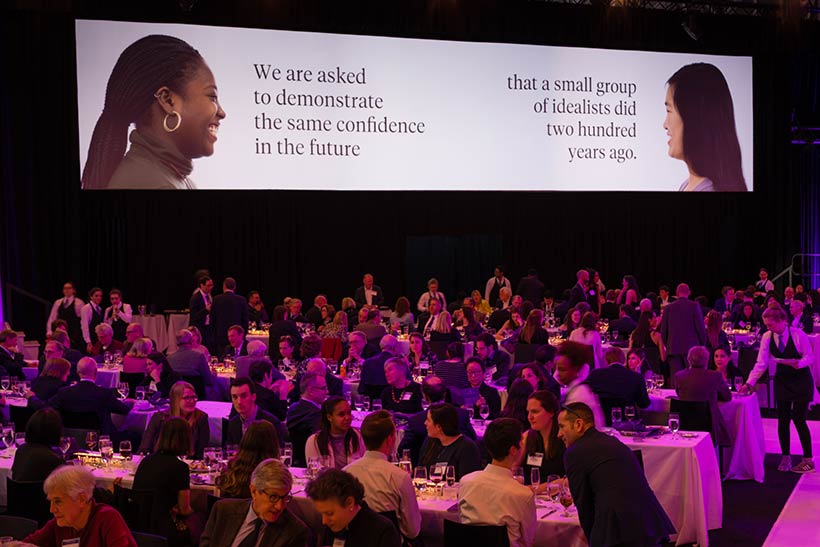
What do alumni often miss most after graduation? The conversations. And that’s precisely what they say they love years later. So, for several hundred alumni, the chance to return to campus last weekend for talks, performances and a peek inside research labs was a special opportunity.
That opportunity was made all the more exciting by the prospect of being part of the launch of the College’s new fundraising campaign, Promise: The Campaign for Amherst’s Third Century, an effort designed to honor Amherst’s past even as it looks to its future.
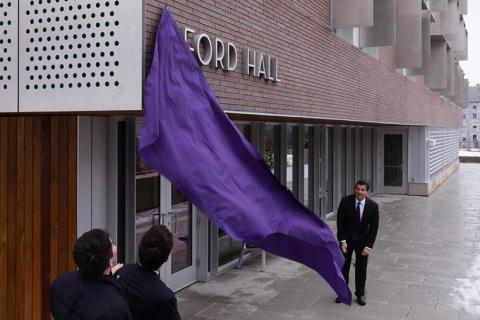
But it was students who took the lead during the weekend’s concurrent sessions. They described their research with ultracold atoms, their work in the humanities and with the Loeb Center for Career Exploration, and how they took part in innovative projects, including a deep dive into the archives that resulted in a scholarly article.
The weekend culminated in a dinner on Saturday evening, when visitors found Coolidge Cage transformed into a lush, purple-hued event space. As enormous screens displayed photos, campaign co-chairs Ted Beneski ’78, P’08, Doug Grissom ’89 and Chris Noyer Seaver ’81, P’11, ’14 welcomed alumni, students and faculty to the event.
At the dinner, visitors also browsed an exhibit of rarely seen items from the Amherst archives, including a cane belonging to Amherst’s first president, Zephaniah Swift Moore, and the baseballs used during the first intercollegiate baseball game in 1859.
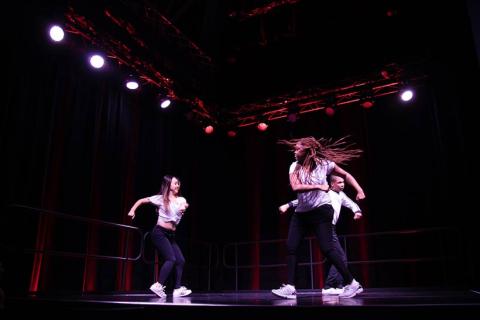
Below are vignettes from the campaign launch weekend events.
On The Next Generation of Thinkers
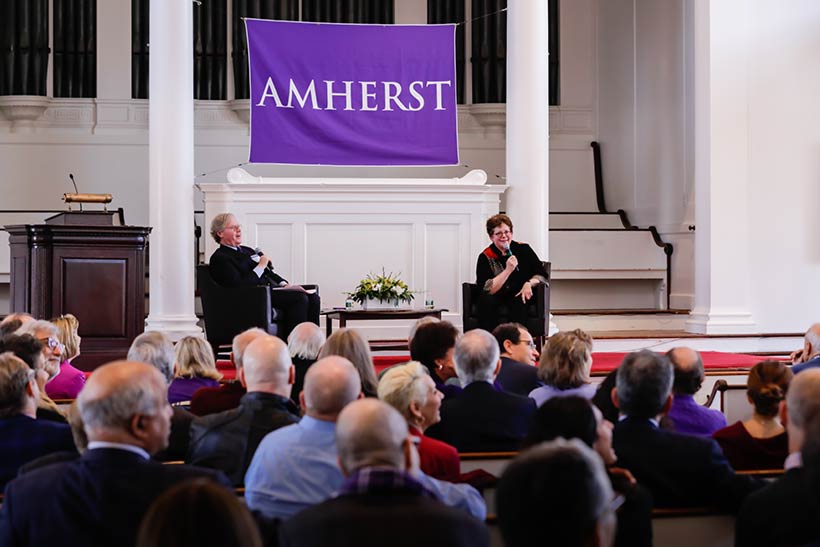
Today’s students are creative, versatile, adaptive and quick—perhaps by virtue of the fact that they’ve been raised with technology, said President Biddy Martin in Johnson Chapel, where she was interviewed by Board of Trustees Chair Cullen Murphy ’74.
“It just brings me alive to be around them,” Martin said.
Noting that the College, because of faculty retirements, is in the midst of a hiring spree, Murphy also asked Martin to talk about newer faculty faces on campus. She called out several “remarkable scholars, remarkable teachers,” among them Associate Professor of Mathematics Amanda Folsom, a numbers theorist who left Yale to come to Amherst. “She could be anywhere,” Martin said. “And she’s here.”
The conversation later turned to one of the most revered teachers in Amherst history, Benjamin DeMott, a member of the English faculty from 1951 to 1990. His teaching inspired generations of students—and led Martin and Murphy to remark on the teaching that happens in classrooms today, in areas ranging from geology, to English, to law, jurisprudence and social thought. “There are Benjamin DeMotts here now,” Martin said.
Among other topics, Martin and Murphy also discussed the rise in STEM enrollment and the need for a new Science Center. Amherst has a responsibility to “prepare the next generation of thinkers and the next generation of great scientists,” Martin said. “We need to produce liberal arts graduates who think about science in ways inflected by values in the humanities.”
A Dorm Dedication

President Martin praised William E. Ford III ’83 to an enthusiastic crowd that filled the dorm’s event space on Friday as Greenway Dorm A was renamed Ford Hall in his honor.
“There is no one I am more glad to thank than Bill Ford, one of my favorite people,” Martin said.
She spoke of Ford’s deep connection to the College as a student, parent, trustee and chair of the investment committee: “Your careful, deliberate, wise counsel has strengthened the College in so many ways.”
An economics major, Ford is CEO of General Atlantic, a growth equity firm. Aditi Krishnamurthy ’18, Association of Amherst Students president, also spoke, noting that “Mr. Ford’s gifts to the College certainly are mammoth!" And Murphy extolled Ford’s generosity: “Apart from requesting salt and pepper, I’ve never heard Bill ask for something for himself.”
After the reveal of the silver Ford Hall sign, guests enjoyed champagne and marveled at an elaborate cake replica of Ford Hall, created by the College’s pastry cook, Carl Charrette.
All around campus on Saturday, alumni and students gathered for a range of academic lectures and scientific demonstrations. Here are a few highlights:
Passion and Purpose with Sarat
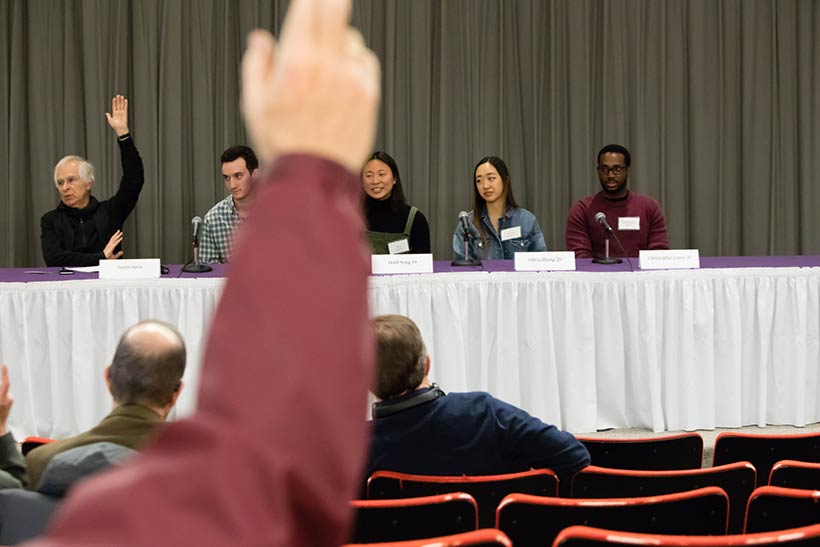
At “Passion and Purpose: Development Outside the Classroom,” Associate Dean of the Faculty Austin Sarat spoke with a panel of students, who described extracurricular interests as a valuable part of their college lives,.
Involvement with such activities as student publications, athletics, and performance clubs offers a chance to make new friends and to enrich existing friendships, students said.
“Extracurriculars have opened up a new set of interests I didn’t know I had coming in,” said Jacob May ’19, whose passions outside of class include the theater group Mr. Gad’s House of Improv and the publication The Indicator.
These organizations are often useful in connecting with alumni, as well.
“It’s helpful to see people who did similar things to me and see what they do now,” said Olivia Zheng ’20.
Translating Wonder
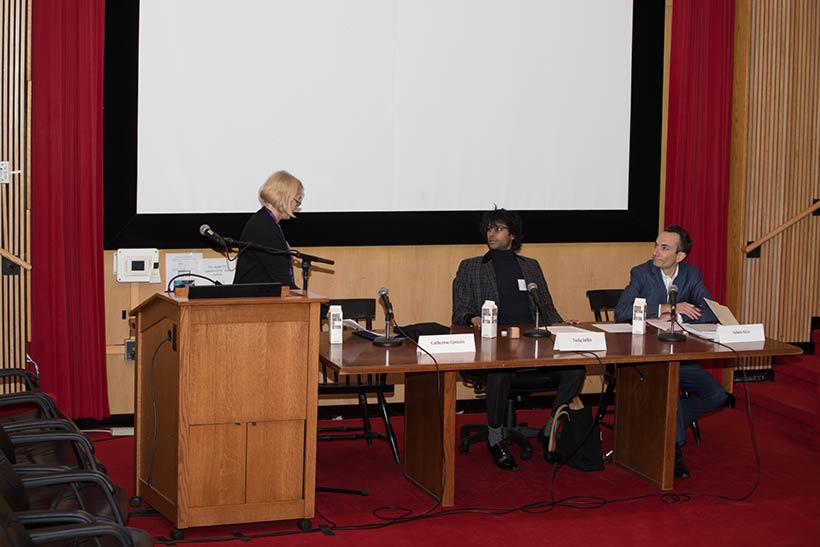
Introducing the panel “Translating Wonder: Texts, Traditions, Teaching,” Catherine Epstein, dean of the faculty and Winkley Professor of History, revealed that a little more than half of all Amherst students in the past 50 years have majored in the humanities. Amherst still has the highest percentage of humanities majors of any elite liberal arts college. Epstein believes the skills they cultivate—close reading, critical thinking and clear writing—are much needed in the 21st century.
Panelist Tariq Jaffer, associate professor of religion, considered wonder, calling it a common theme across all disciplines at Amherst, and cited current Western scholarship and medieval Islamic scholarship on the subject. Adam Sitze, associate professor of law, jurisprudence and social thought, took the audience through a close reading of Shakespeare’s Sonnet 23.
The ensuing Q&A in Cole Assembly Room—including alumni from different generations and parents of current students—led to a discussion of such interrelated topics as trigger warnings, the risks and uses of digital technology in the humanities and Amherst’s open curriculum.
Ultracold and Ultracool
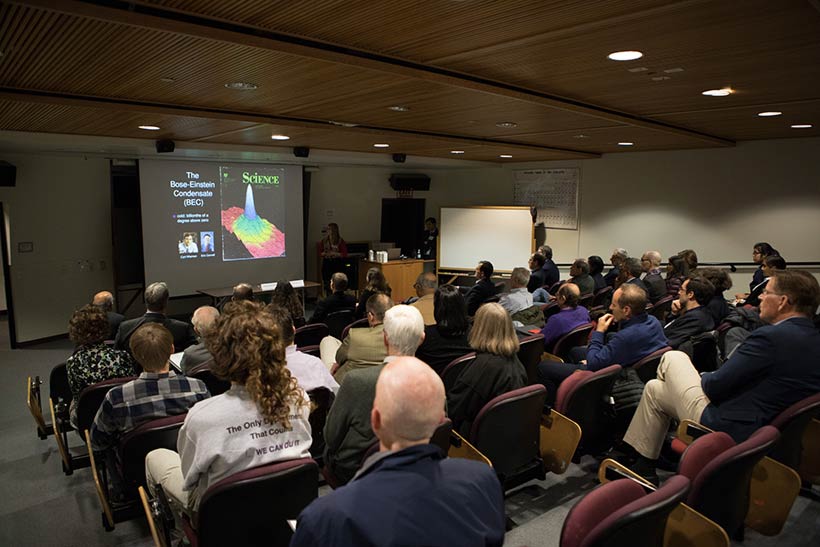
The first moment that had the audience gasping in wonder came when David S. Hall ’91, the Paula R. and David J. Avenius 1941 Professor of Physics, brought a canister out from behind a curtain and poured hissing vapor across a table. The crowd in Merrill Science Center Lecture Hall 4, who had come for a session intriguingly called “A Peek Inside the Atomic Refrigerator,” took a collective breath and then laughed.
“You can’t have a good physics talk without liquid air,” Hall said.
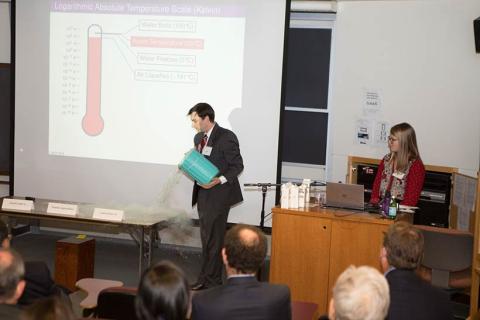
Weiss described some behaviors she’s investigating for her thesis, namely groundbreaking identification of vortices in Bose-Einstein condensates.
She said the vortices appear like the eye of a hurricane, but are actually much stranger: “If I started rotating, I wouldn’t get holes in me,” she joked, “Because that would be alarming.”
Planning the Future, Proactively
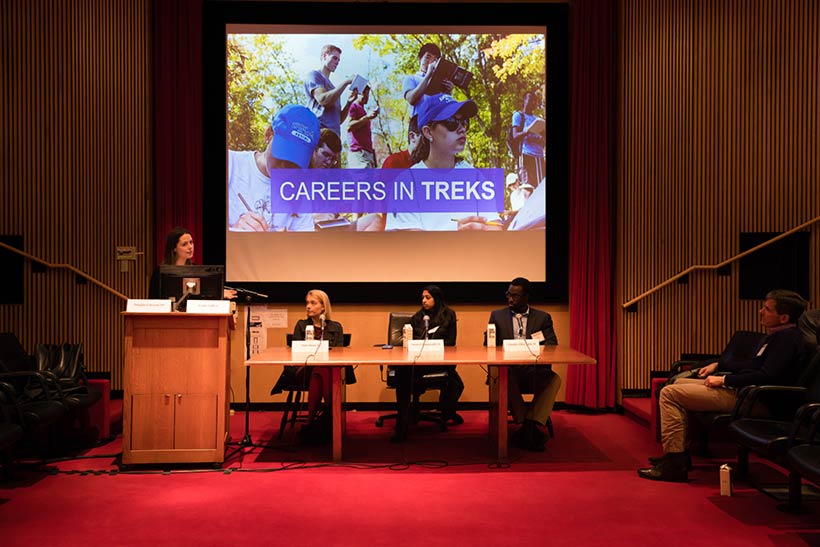
When she was in college, Emily Griffen, director of the Loeb Center for Career Exploration and Planning, had access to “a few generalist career advisers and a lot of binders.”
Speaking in Cole Assembly Room, Griffen said today’s career center is more proactive. “This is all the more important,” she said, “for students with different levels of access to social capital, cultural capital and professional networks.”
Griffen brought along three students—Timothy Offei-Addo ’19, Monica Nimmagadda ’18 and Alida Mitau ’18—who’ve used the Loeb Center to explore potential career paths. Offei-Addo, for example, took part in a multiday “career trek” that included a site visit to the World Bank and an alumni-student gathering in which he “met the woman who’s literally done everything I want to do in my life.”
Collaborating in the Archives

In spring 2017, six students began work on a project that would last nearly a year and result in an original scholarly article. The class was taught by Ellen Boucher, assistant professor of history, and Dunstan McNutt, research librarian.
In Stirn Auditorium, five of the students, along with Boucher and McNutt, spoke about the experience, explaining how they decided on a project, combed through archives in London and turned that research into a historical argument.
“That experience showed me how fun it can be to work in archives,” said Isabel Miller ’19.
The students focused on the rise of the first aid movement in the early 20th century in the United Kingdom and how first aid training informed ideas about British civic responsibility and gave average citizens confidence in handling a rapidly changing and industrialized world.
Collaborative research is the norm at Amherst, but this course is one of a handful of new, intensive research classes that also includes a travel component. Boucher received Amherst funding to take the students to London for a week last summer to conduct the research.
Listening and Community at the Singing College
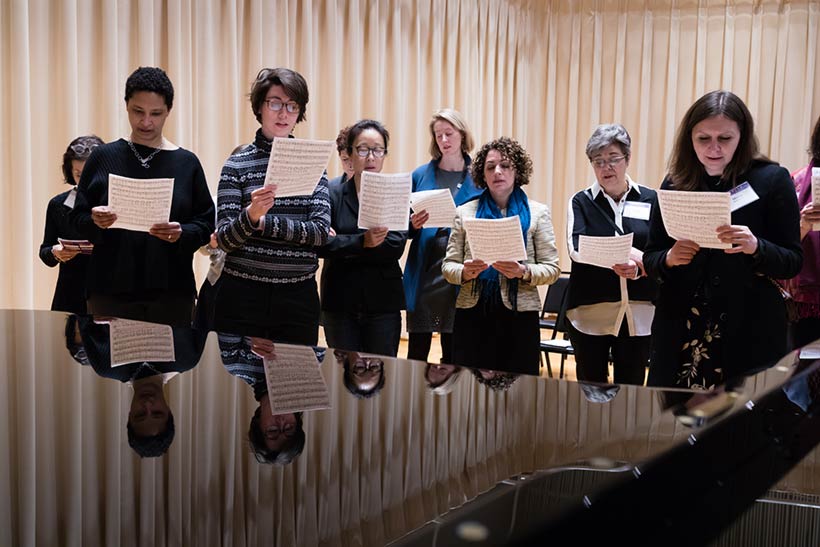
In Buckley Recital Hall on Saturday, a group of avid alumni singers joined forces with current Choral Society members for an afternoon of music.
Led by Associate Professor of Music Jeffers Engelhart and Visiting Lecturer Greg Brown ’98, the session started off with a discussion of the difference between hearing and listening and the aesthetics of sound when part of a community.
Englehardt and Brown then led the group through a few deep listening exercises—identifying the furthest noise and the closest—and responding to environmental situations—creating a medley of taps in time to each individual’s heartbeats.
The session ended with the group, visitors included, singing several Amherst songs.
